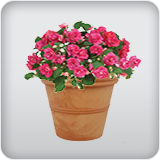Memorial Day Tree Sale Now - March 27th! While Supplies Last

Plant Finder

Pink Grapefruit Yarrow
Achillea 'Pink Grapefruit'
Height: 30 inches
Spread: 30 inches
Sunlight:

Hardiness Zone: 4a
Description:
A drought tolerant perennial, selected for vivid hot-lavender pink florets. This compact plant will brighten up any full-sun area and will adapt to poor soils
Ornamental Features
Pink Grapefruit Yarrow is blanketed in stunning hot pink flat-top flowers at the ends of the stems from early to late summer. The flowers are excellent for cutting. Its attractive tomentose ferny leaves remain grayish green in color throughout the season.
Landscape Attributes
Pink Grapefruit Yarrow is an herbaceous perennial with a ground-hugging habit of growth. Its relatively fine texture sets it apart from other garden plants with less refined foliage.
This is a high maintenance plant that will require regular care and upkeep, and is best cleaned up in early spring before it resumes active growth for the season. It is a good choice for attracting bees, butterflies and hummingbirds to your yard, but is not particularly attractive to deer who tend to leave it alone in favor of tastier treats. Gardeners should be aware of the following characteristic(s) that may warrant special consideration;
- Spreading
- Self-Seeding
Pink Grapefruit Yarrow is recommended for the following landscape applications;
- Mass Planting
- Border Edging
- General Garden Use
- Groundcover
- Naturalizing And Woodland Gardens
- Container Planting
Planting & Growing
Pink Grapefruit Yarrow will grow to be about 30 inches tall at maturity, with a spread of 30 inches. It grows at a fast rate, and under ideal conditions can be expected to live for approximately 10 years. As an herbaceous perennial, this plant will usually die back to the crown each winter, and will regrow from the base each spring. Be careful not to disturb the crown in late winter when it may not be readily seen!
This plant should only be grown in full sunlight. It prefers to grow in average to dry locations, and dislikes excessive moisture. It is considered to be drought-tolerant, and thus makes an ideal choice for a low-water garden or xeriscape application. It is not particular as to soil pH, but grows best in poor soils. It is highly tolerant of urban pollution and will even thrive in inner city environments. This particular variety is an interspecific hybrid. It can be propagated by division; however, as a cultivated variety, be aware that it may be subject to certain restrictions or prohibitions on propagation.
Pink Grapefruit Yarrow is a fine choice for the garden, but it is also a good selection for planting in outdoor pots and containers. Because of its spreading habit of growth, it is ideally suited for use as a 'spiller' in the 'spiller-thriller-filler' container combination; plant it near the edges where it can spill gracefully over the pot. It is even sizeable enough that it can be grown alone in a suitable container. Note that when growing plants in outdoor containers and baskets, they may require more frequent waterings than they would in the yard or garden.


 Characteristics
Characteristics





 Applications
Applications




 Features & Attributes
Features & Attributes
Pink Grapefruit Yarrow
Achillea 'Pink Grapefruit'
Height: 30 inches
Spread: 30 inches
Sunlight:
![]()
Hardiness Zone: 4a
Description:
A drought tolerant perennial, selected for vivid hot-lavender pink florets. This compact plant will brighten up any full-sun area and will adapt to poor soils
Ornamental Features
Pink Grapefruit Yarrow is blanketed in stunning hot pink flat-top flowers at the ends of the stems from early to late summer. The flowers are excellent for cutting. Its attractive tomentose ferny leaves remain grayish green in color throughout the season.
Landscape Attributes
Pink Grapefruit Yarrow is an herbaceous perennial with a ground-hugging habit of growth. Its relatively fine texture sets it apart from other garden plants with less refined foliage.
This is a high maintenance plant that will require regular care and upkeep, and is best cleaned up in early spring before it resumes active growth for the season. It is a good choice for attracting bees, butterflies and hummingbirds to your yard, but is not particularly attractive to deer who tend to leave it alone in favor of tastier treats. Gardeners should be aware of the following characteristic(s) that may warrant special consideration;
- Spreading
- Self-Seeding
Pink Grapefruit Yarrow is recommended for the following landscape applications;
- Mass Planting
- Border Edging
- General Garden Use
- Groundcover
- Naturalizing And Woodland Gardens
- Container Planting
Planting & Growing
Pink Grapefruit Yarrow will grow to be about 30 inches tall at maturity, with a spread of 30 inches. It grows at a fast rate, and under ideal conditions can be expected to live for approximately 10 years. As an herbaceous perennial, this plant will usually die back to the crown each winter, and will regrow from the base each spring. Be careful not to disturb the crown in late winter when it may not be readily seen!
This plant should only be grown in full sunlight. It prefers to grow in average to dry locations, and dislikes excessive moisture. It is considered to be drought-tolerant, and thus makes an ideal choice for a low-water garden or xeriscape application. It is not particular as to soil pH, but grows best in poor soils. It is highly tolerant of urban pollution and will even thrive in inner city environments. This particular variety is an interspecific hybrid. It can be propagated by division; however, as a cultivated variety, be aware that it may be subject to certain restrictions or prohibitions on propagation.
Pink Grapefruit Yarrow is a fine choice for the garden, but it is also a good selection for planting in outdoor pots and containers. Because of its spreading habit of growth, it is ideally suited for use as a 'spiller' in the 'spiller-thriller-filler' container combination; plant it near the edges where it can spill gracefully over the pot. It is even sizeable enough that it can be grown alone in a suitable container. Note that when growing plants in outdoor containers and baskets, they may require more frequent waterings than they would in the yard or garden.

